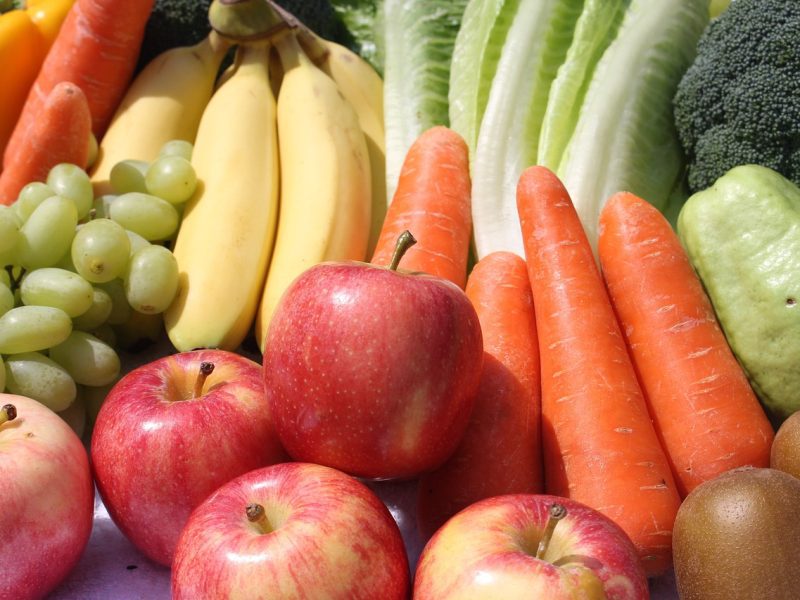Welcome to our article on the best foods for shingles! If you or someone you know is currently dealing with this painful condition, then you know how important it is to take care of your body during this time. Proper nutrition is an essential component of managing shingles and can help speed up the healing process, reduce inflammation, and provide relief from discomfort.
In this article, we’ll explore the best foods for shingles that can aid in your recovery, as well as the foods you should avoid to prevent further irritation. Whether you’re dealing with shingles yourself or looking for ways to help someone else, keep reading to learn more about the power of nutrition in managing this condition.
I. Foods to Eat for Shingles
When it comes to managing shingles, nutrition plays a critical role in the healing process. Incorporating the best foods for shingles into your diet can help reduce inflammation, promote healing, and provide relief from discomfort. Here are two groups of foods that are particularly beneficial for those dealing with shingles:
A. Foods with High Levels of Lysine
Lysine is an essential amino acid that plays a crucial role in the production of collagen, a protein that is essential for healthy skin, bones, and tissues. In addition, lysine has been shown to help combat the herpes virus, which is the underlying cause of shingles. Consuming foods high in lysine can help boost your immune system and reduce the severity of your shingles symptoms. Some of the best foods for shingles that are high in lysine include:
- Fish (such as salmon and tuna)
- Poultry (such as chicken and turkey)
- Dairy products (such as milk, cheese, and yoghurt)
- Legumes (such as beans, lentils, and chickpeas)
- Quinoa
- Eggs
B. Foods Rich in Vitamin C
Vitamin C is a powerful antioxidant that is essential for immune system function and wound healing. It is also a natural anti-inflammatory agent that can help reduce the severity of shingles symptoms, including pain and discomfort. Consuming foods rich in vitamin C can help boost your immune system and reduce inflammation, promoting faster healing. Some of the best foods for shingles that are rich in vitamin C include:
- Citrus fruits (such as oranges, lemons, and grapefruits)
- Berries (such as strawberries, raspberries, and blueberries)
- Kiwi fruit
- Mango
- Pineapple
- Papaya
Incorporating these best foods for shingles into your diet can help provide your body with the nutrients it needs to heal and recover from this condition. Whether you’re looking to speed up the healing process, reduce inflammation, or simply alleviate your symptoms, a healthy diet rich in these foods can be an effective natural remedy for shingles.
In addition to foods high in lysine and vitamin C, there are other types of foods that can be beneficial for managing shingles symptoms. Specifically, consuming foods with anti-inflammatory properties and vitamin E can help reduce inflammation and promote healing. Here are two more groups of best foods for shingles:
C. Foods with Anti-Inflammatory Properties
Inflammation is a natural response of the immune system to injury or infection. However, when inflammation becomes chronic, it can contribute to a wide range of health problems, including shingles. Consuming foods with anti-inflammatory properties can help reduce inflammation and alleviate the discomfort associated with shingles. Some of the best foods for shingles that are high in anti-inflammatory compounds include:
- Fatty fish (such as salmon, mackerel, and sardines)
- Nuts (such as almonds and walnuts)
- Seeds (such as chia seeds and flaxseeds)
- Turmeric
- Ginger
- Leafy green vegetables (such as spinach and kale)
D. Foods Rich in Vitamin E
Vitamin E is a powerful antioxidant that can help protect the skin from damage and promote healing. It is also known to boost immune system function, which is important for fighting off the herpes virus that causes shingles. Consuming foods rich in vitamin E can help support your immune system and promote faster healing. Some of the best foods for shingles that are high in vitamin E include:
- Nuts (such as almonds, hazelnuts, and peanuts)
- Seeds (such as sunflower seeds and pumpkin seeds)
- Avocado
- Spinach
- Broccoli
- Mango
Incorporating all the above foods for shingles into your diet can help reduce inflammation, promote healing, and provide relief from discomfort. Whether you’re looking to speed up the healing process or simply manage your symptoms more effectively, a healthy diet rich in these foods can be a powerful natural remedy for shingles.
II. Foods to Avoid for Shingles
While certain foods can be helpful in managing shingles symptoms, there are also certain foods that can make them worse. Here are three groups of foods to avoid for shingles:
A. Foods High in Arginine
Arginine is an amino acid that can promote the replication of the herpes virus that causes shingles. Consuming foods high in arginine can exacerbate symptoms and delay healing. Some of the worst foods for shingles that are high in arginine include:
- Nuts (such as peanuts, cashews, and almonds)
- Seeds (such as sesame seeds and sunflower seeds)
- Chocolate
- Gelatin
- Protein supplements
- Whole wheat bread
While it’s not necessary to completely avoid these foods, it’s a good idea to limit your intake while you’re experiencing shingles symptoms.
B. Foods High in Sugar
Eating foods high in sugar can weaken the immune system and contribute to inflammation, both of which can make shingles symptoms worse. Additionally, consuming high amounts of sugar can increase your risk of developing other health problems that can further complicate shingles. Some of the worst foods for shingles that are high in sugar include:
- Candy
- Soft drinks
- Sweetened juices
- Pastries and baked goods
- Sugary cereals
C. Processed Foods
Processed foods are often high in sugar, salt, and unhealthy fats, all of which can contribute to inflammation and weaken the immune system. Additionally, many processed foods contain additives and preservatives that can further disrupt immune system function. Some of the worst processed foods for shingles include:
- Fast food
- Frozen meals
- Packaged snacks
- Processed meats (such as deli meats and hot dogs)
- Canned soups
By avoiding the above foods for shingles, you can help reduce inflammation, support your immune system, and promote faster healing. Instead, focus on incorporating the best foods for shingles into your diet to support your body’s natural healing process.
III. Frequently Asked Questions
Q. Can food cure shingles?
A. While there is no specific food that can cure shingles, a healthy and balanced diet can support your body’s natural healing process and help alleviate symptoms.
Q. How long does shingles last?
A. Shingles typically lasts for 2-4 weeks, but some people may experience symptoms for up to several months. Early treatment can help reduce the severity and duration of symptoms.
Q. Can shingles be prevented by diet?
A. While a healthy diet can support immune function and overall health, there is no specific diet that can prevent shingles. However, certain foods can help manage symptoms and reduce the risk of complications.
Q. Are there any foods that can worsen shingles?
A. Yes, foods that are high in arginine, sugar, and processed ingredients can exacerbate symptoms and delay healing. It’s best to limit your intake of these foods while experiencing shingles symptoms.
Q. What are the best natural remedies for shingles?
A. Along with a healthy diet, there are several natural remedies that can help alleviate shingles symptoms. These include:
- Cold compresses to help reduce pain and inflammation
- Oatmeal baths to soothe the skin and reduce itching
- Calamine lotion to help relieve itching
- Aloe vera to help soothe the skin and reduce inflammation
- Capsaicin cream to help reduce pain and itching
- Lemon balm to help reduce pain and promote healing
It’s important to talk to your doctor before using any natural remedies, especially if you are taking any medications or have underlying health conditions.
IV. Wrapping Things Up
In conclusion, proper nutrition is crucial for supporting the body’s natural healing process and managing symptoms during a shingles outbreak. The best foods for shingles are those that are high in lysine, vitamin C, and vitamin E, as well as those with anti-inflammatory properties. Conversely, it’s important to avoid foods high in arginine, sugar, and processed ingredients, as these can exacerbate symptoms and delay healing.
It’s also important to remember that while diet can play a supportive role in managing shingles, it should not be considered a cure or a substitute for medical treatment. If you are experiencing shingles symptoms, it’s important to talk to your healthcare provider about treatment options.
In addition to a healthy diet, there are other natural remedies and lifestyle changes that can help alleviate symptoms and support healing. These include stress reduction, getting enough rest, staying hydrated, and avoiding irritants such as tight clothing.
If you’re looking for a comprehensive guide to managing shingles symptoms and promoting healing, consider checking out Julissa Clay’s The Shingles Solution. This program provides a wealth of information on natural remedies, lifestyle changes, and dietary strategies for managing shingles and reducing the risk of complications.
Overall, maintaining a healthy and balanced diet is an important part of managing shingles and promoting overall health and wellness. By incorporating the best foods for shingles into your diet and avoiding those that can worsen symptoms, you can support your body’s natural healing process and minimise discomfort during a shingles outbreak.
Read Next
- Best Foods to Eat for Hypothyroidism: A Comprehensive Guide
- Gout Attacks: Understanding Triggers and How to Avoid Them
- The Relationship Between Alcohol and High Blood Pressure
- Gout in Children: Symptoms and Treatment Options
- The Importance of Hydration in Gout: How Much Water Is Needed?
Disclaimer: The information provided on Healthy Lifestyles for All is intended for general educational purposes only and should not be considered as medical advice. Please consult with your GP or other health professional before making any significant changes to your diet, exercise routine, or any other aspect of your lifestyle. We are not responsible for any adverse effects or consequences resulting from the use of the information provided on our blog.
Comments: I hope you enjoyed reading this post as much as I enjoyed writing it. If you liked it, please leave a comment. If you didn’t like it, disagree with something I have written (I’m okay with that), or think I got something wrong (that’s okay too), please leave a comment as well. We only truly learn from our mistakes, so I am happy to have mine pointed out.
Affiliate Links: Please also note that I may make a small amount of money if you buy one of the products I recommend in any of my blog posts. Rest assured that I have done my own due diligence, and only recommend products that have been tried and tested, and have extremely good feedback. Additionally, many of the products I recommend have 30 or 60-day money-back guarantees, so you can buy in the confidence that if a particular product is not right for you, you can get a refund.


